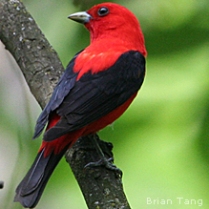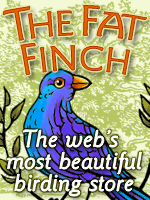By The Fat Finch
When I first heard this term I had a vision of little birds spewing out of a volcano. But we’re not talking about that kind of eruption.
In the avian world, a bird irruption is a term scientists use to describe unusually large numbers of non-migratory northern birds that move out of their nesting range, typically in North America’s boreal forest. The birds leave the vast, wild expanse of forest, tundra and wetlands that span the width of Canada and Alaska to spend the winter farther south than normal. The irruption occurs because of changes in food supply.
The species that most commonly engage in irruption behavior are northern owls, such as the Great Gray Owl and Snowy Owl and certain grosbeaks including evening grosbeaks. In irruptive years, large numbers of these species may move down into the United States.
This winter there is an irruption of snowy owls coming down into the United States as far down as Kansas and northern Colorado. And this event is causing another kind of eruption—photographers and birders are swarming into these areas to photograph and view these magnificent birds.
Several springs ago a very large number of western tanagers migrated through my area of the world (New Mexico) and stayed for approximately three weeks before heading to their normal summer homes. Was it an irruption? No, it was simply a normal migration of birds who occasionally stay in larger numbers for a longer period of time before moving on. It was a lucky and enjoyable event—I didn’t get much work done because I was staring out the window constantly looking at these gorgeous birds. They also ate 20 lbs of grape jelly off my oriole feeders during those three weeks.
Bird migration is a familiar and predictable seasonal movement of birds. Species that migrate do so every year at approximately the same time, traveling in a predetermined pattern, often to exactly the same destination time after time. Migrations are closely related to the breeding season and the arrival of spring in the breeding range. In contrast, irruptions are unpredictable. It’s all part of the wonderful and amazing world of birds.














